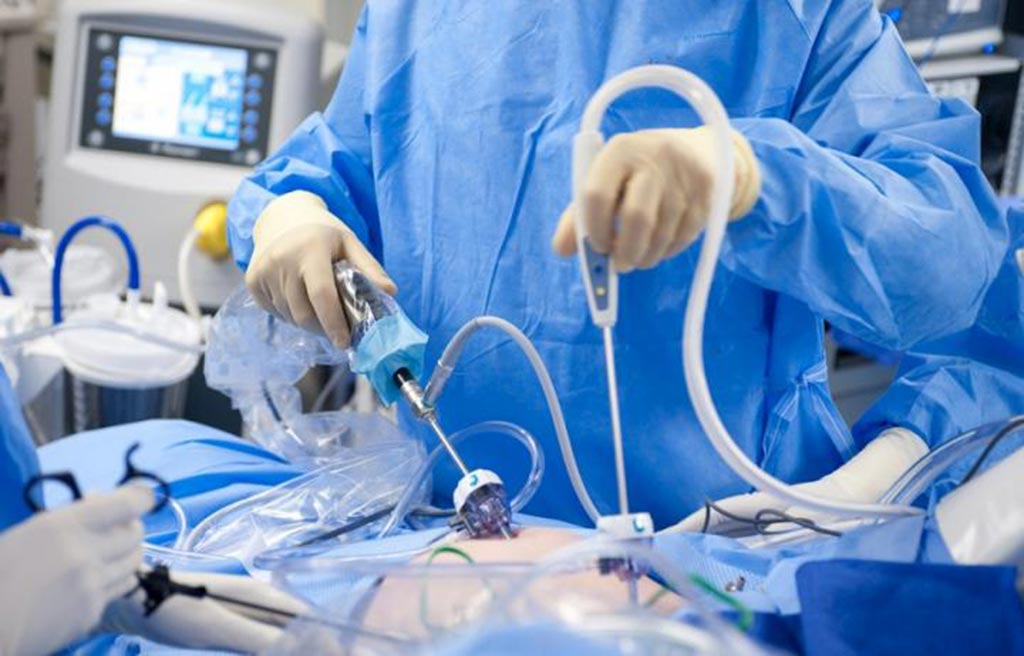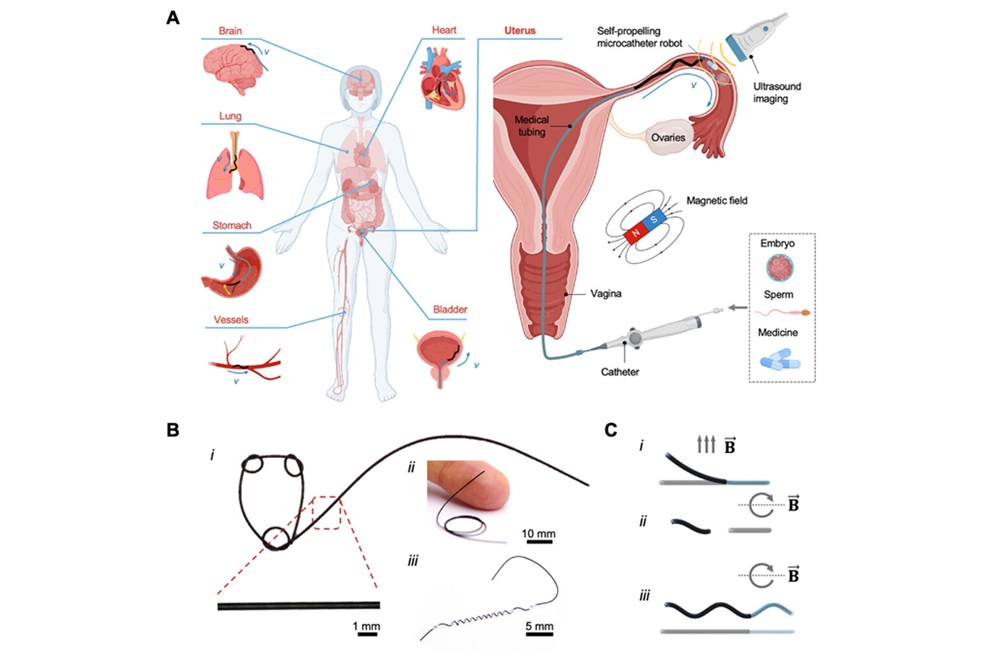MIS Outcomes Beat Open Surgery Stats
|
By HospiMedica International staff writers Posted on 12 Jul 2017 |

Image: According to a new study, MIS shows better outcomes in most surgical procedures (Photo courtesy of Alamy).
Minimally invasive surgery (MIS) leads to more favorable 30-day postoperative outcomes when compared to traditional open surgery, according to a new study.
Researchers at Henry Ford Hospital (Detroit, MI, USA) and Brigham and Women’s Hospital (Boston, MA, USA) conducted a study of 532,287 patients who underwent appendectomy, colectomy, inguinal hernia repair, hysterectomy, and prostatectomy, as identified in the American College of Surgeons (ACS) National Surgical Quality Improvement Program database. The researchers examined associations between surgery and 30-day postoperative outcomes, including complications, unplanned readmissions, hospital stay, and mortality.
The results revealed that 53.8% of the patients underwent MIS for the five common surgical procedures. Within procedure-specific matched pairs, MIS was associated with significantly lower odds of Clavien–Dindo grade I–II, III, and IV complications, unplanned readmissions, and reduced hospital stay in four of the five procedures studied, with the exception of inguinal hernia repair. Odds of death were lower in patients undergoing MIS colectomy, hysterectomy, and appendectomy. The study was published on June 20, 2017, in BJS.
“We expected some of the results, but the extent and consistency of the benefits associated with minimally-invasive surgery across four of the five studied procedures surprised us,” said lead author Akshay Sood, MD, of Henry Ford Hospital. “The findings also suggest that from an economic perspective, MIS may be more cost-effective than traditional open surgery, because complications and unplanned readmissions represent the major drivers of treatment costs.”
MIS, which can be performed on both inpatient and outpatient basis, appeals to patients as it involves less blood loss, smaller surgical scars, shorter hospital stays, and less need for analgesics. A typical procedure is performed through several small incisions, using a range specialized surgical instruments, miniature cameras and fiber-optic light sources, and high definition (HD) monitors. In most cases, the incisions are up to 10 cm in length, instead of the 15-20 cm incision required by traditional surgery.
Related Links:
Henry Ford Hospital
Brigham and Women’s Hospital
Researchers at Henry Ford Hospital (Detroit, MI, USA) and Brigham and Women’s Hospital (Boston, MA, USA) conducted a study of 532,287 patients who underwent appendectomy, colectomy, inguinal hernia repair, hysterectomy, and prostatectomy, as identified in the American College of Surgeons (ACS) National Surgical Quality Improvement Program database. The researchers examined associations between surgery and 30-day postoperative outcomes, including complications, unplanned readmissions, hospital stay, and mortality.
The results revealed that 53.8% of the patients underwent MIS for the five common surgical procedures. Within procedure-specific matched pairs, MIS was associated with significantly lower odds of Clavien–Dindo grade I–II, III, and IV complications, unplanned readmissions, and reduced hospital stay in four of the five procedures studied, with the exception of inguinal hernia repair. Odds of death were lower in patients undergoing MIS colectomy, hysterectomy, and appendectomy. The study was published on June 20, 2017, in BJS.
“We expected some of the results, but the extent and consistency of the benefits associated with minimally-invasive surgery across four of the five studied procedures surprised us,” said lead author Akshay Sood, MD, of Henry Ford Hospital. “The findings also suggest that from an economic perspective, MIS may be more cost-effective than traditional open surgery, because complications and unplanned readmissions represent the major drivers of treatment costs.”
MIS, which can be performed on both inpatient and outpatient basis, appeals to patients as it involves less blood loss, smaller surgical scars, shorter hospital stays, and less need for analgesics. A typical procedure is performed through several small incisions, using a range specialized surgical instruments, miniature cameras and fiber-optic light sources, and high definition (HD) monitors. In most cases, the incisions are up to 10 cm in length, instead of the 15-20 cm incision required by traditional surgery.
Related Links:
Henry Ford Hospital
Brigham and Women’s Hospital
Latest Surgical Techniques News
- Catheter-Based Procedures Offer Less Invasive Option for Treatment of Valvular Disease
- Laparoscopic Surgery Improves Outcomes for Severe Newborn Liver Disease
- Novel Endoscopy Technique Provides Access to Deep Lung Tumors
- New Study Findings Could Halve Number of Stent Procedures
- Breakthrough Surgical Device Redefines Hip Arthroscopy
- Automated System Enables Real-Time "Molecular Pathology" During Cancer Surgery
- Groundbreaking Procedure Combines New Treatments for Liver Tumors
- Ablation Reduces Stroke Risk Associated with Atrial Fibrillation
- Optical Tracking Method Identifies Target Areas in Robot-Assisted Neurosurgery
- General Anesthesia Improves Post-Surgery Outcomes for Acute Stroke Patients
- Drug-Coated Balloons Can Replace Stents Even in Larger Coronary Arteries
- Magnetic Kidney Stone Retrieval Device Outperforms Ureteroscopic Laser Lithotripsy
- Absorbable Skull Device Could Replace Traditional Metal Implants Used After Brain Surgery
- Magic Silicone Liquid Powered Robots Perform MIS in Narrow Cavities
- 'Lab-on-a-Scalpel' Provides Real-Time Surgical Insights for POC Diagnostics in OR
- Biodegradable Brain Implant Prevents Glioblastoma Recurrence
Channels
Critical Care
view channel
Bioadhesive Strategy Prevents Fibrosis Around Device Implants on Peripheral Nerves
Peripheral nerves connect the brain and spinal cord to muscles, organs, and sensory systems, making them key targets for treating neurological and systemic diseases. However, implantable bioelectronic... Read more
Miniature Non-Invasive Robotic Catheters to Improve Infertility Treatments
Minimally invasive procedures in reproductive and gynaecological medicine are often limited by the difficulty of navigating narrow, delicate anatomical pathways without damaging surrounding tissue.... Read morePatient Care
view channel
Revolutionary Automatic IV-Line Flushing Device to Enhance Infusion Care
More than 80% of in-hospital patients receive intravenous (IV) therapy. Every dose of IV medicine delivered in a small volume (<250 mL) infusion bag should be followed by subsequent flushing to ensure... Read more
VR Training Tool Combats Contamination of Portable Medical Equipment
Healthcare-associated infections (HAIs) impact one in every 31 patients, cause nearly 100,000 deaths each year, and cost USD 28.4 billion in direct medical expenses. Notably, up to 75% of these infections... Read more
Portable Biosensor Platform to Reduce Hospital-Acquired Infections
Approximately 4 million patients in the European Union acquire healthcare-associated infections (HAIs) or nosocomial infections each year, with around 37,000 deaths directly resulting from these infections,... Read moreFirst-Of-Its-Kind Portable Germicidal Light Technology Disinfects High-Touch Clinical Surfaces in Seconds
Reducing healthcare-acquired infections (HAIs) remains a pressing issue within global healthcare systems. In the United States alone, 1.7 million patients contract HAIs annually, leading to approximately... Read moreHealth IT
view channel
EMR-Based Tool Predicts Graft Failure After Kidney Transplant
Kidney transplantation offers patients with end-stage kidney disease longer survival and better quality of life than dialysis, yet graft failure remains a major challenge. Although a successful transplant... Read more
Printable Molecule-Selective Nanoparticles Enable Mass Production of Wearable Biosensors
The future of medicine is likely to focus on the personalization of healthcare—understanding exactly what an individual requires and delivering the appropriate combination of nutrients, metabolites, and... Read moreBusiness
view channel
Philips and Masimo Partner to Advance Patient Monitoring Measurement Technologies
Royal Philips (Amsterdam, Netherlands) and Masimo (Irvine, California, USA) have renewed their multi-year strategic collaboration, combining Philips’ expertise in patient monitoring with Masimo’s noninvasive... Read more
B. Braun Acquires Digital Microsurgery Company True Digital Surgery
The high-end microsurgery market in neurosurgery, spine, and ENT is undergoing a significant transformation. Traditional analog microscopes are giving way to digital exoscopes, which provide improved visualization,... Read more
CMEF 2025 to Promote Holistic and High-Quality Development of Medical and Health Industry
The 92nd China International Medical Equipment Fair (CMEF 2025) Autumn Exhibition is scheduled to be held from September 26 to 29 at the China Import and Export Fair Complex (Canton Fair Complex) in Guangzhou.... Read more















